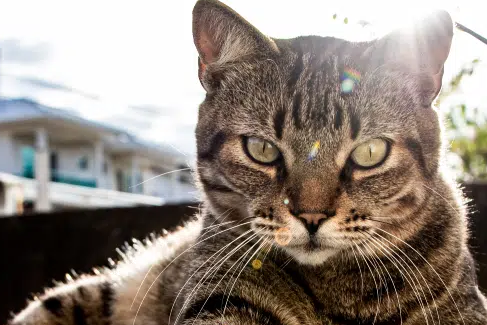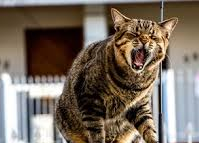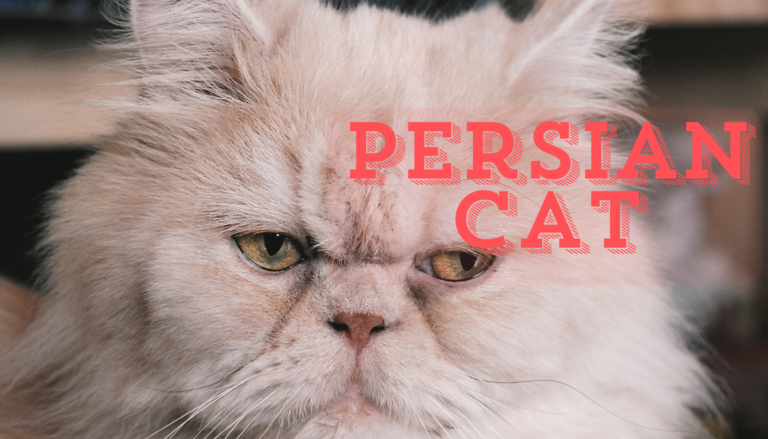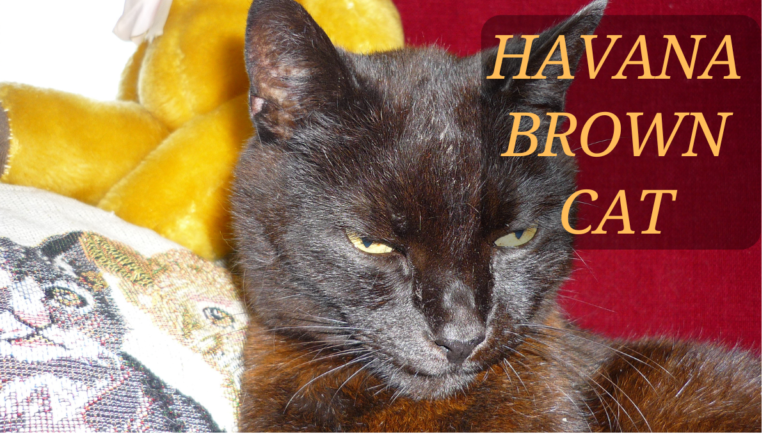Brazilian Shorthair Cat Breed
The Brazilian Shorthair cat breed, descended from the common street cats of Brazil, has gained recognition for its striking appearance and engaging personality. Let’s delve into the fascinating world of the Brazilian Shorthair:

- Appearance:
- These cats boast a beautiful, short, and shiny coat, which is their hallmark feature. The coat is silky and glossy, with no undercoat, making grooming a breeze.
- Their expressive, wide-set eyes come in various colors, harmonizing with their coat shades.
- Brazilian Shorthairs exhibit almost any coat color under the sun, including black, white, gray, red, brown, and cream.
- Personality and Temperament:
- Friendly and Outgoing: Brazilian Shorthairs love interacting with their human family members. They are social butterflies, seeking attention and playtime.
- Intelligent and Playful: These cats are the “Einsteins of the cat world.” Their curiosity fuels playful antics, and they thrive on mental stimulation.
- Energetic Explorers: Brazilian Shorthairs are agile and muscular, maintaining their elegant grace. They enjoy climbing, exploring, and staying busy.
Table of Contents
II. The Fascinating Origin and History of the Brazilian Shorthair Cat Breed
A. Origins and Geographical Context
The Brazilian Shorthair cat breed weaves a captivating tale that spans centuries and continents. Let’s embark on a journey through time to explore the roots of this remarkable feline:
1. Arrival in Brazil: A Seafaring Legacy
The Brazilian Shorthair’s story begins around the year 1500 CE, a pivotal moment when Portuguese sailors set sail for distant lands. Among their cargo were British Shorthair cats, brought aboard ships to control the rodent population during long voyages. These sturdy felines adapted to life at sea, their sleek coats and agile bodies serving them well amidst the salty winds and rolling waves.
2. Street Cats of Brazil
As the sailors established trade routes and colonies, some of these British Shorthairs found themselves on the shores of Brazil. Once ashore, they mingled with local street cats, creating a unique blend of feline heritage. These street cats, resilient and resourceful, roamed the bustling cities and verdant landscapes of Brazil, adapting to their new environment and interbreeding with other local cats.
3. Paulo Samuel Ruschi: The Breeder’s Vision
Fast-forward to the 20th century, when an engineer named Paulo Samuel Ruschi became captivated by the appearance and genetics of these Brazilian street cats. Ruschi envisioned a distinct breed that would encapsulate the spirit of Brazil while celebrating the feline’s natural beauty and intelligence. With determination and collaboration from fellow cat enthusiasts, he embarked on a breeding program to create what we now know as the Brazilian Shorthair.
B. The Brazilian Shorthair Today
1. Distinctive Characteristics
The Brazilian Shorthair stands out for several defining features:
- Coat: Their short, shiny, and silky coat lacks an undercoat, making grooming a breeze. The wide array of coat colors—black, white, gray, red, brown, and cream—reflects their diverse lineage.
- Eyes: Expressive and wide-set, their eyes come in various hues, harmonizing with their coat shades.
- Energy: These cats exude boundless energy, always ready for exploration and play. Their agility and muscular build maintain an elegant grace, even during their most spirited antics.
2. Folklore and Legends
As with any ancient breed, folklore and legends surround the Brazilian Shorthair’s development:
- Ship Cats: Some tales suggest that these cats carried the spirits of sailors, their eyes reflecting the vast ocean they once sailed. Their arrival in Brazil became a symbol of resilience and adaptability.
- Guardians of the Streets: Locals whispered that these street cats possessed mystical powers, warding off evil spirits and bringing luck to households. Their presence was both comforting and mysterious, weaving them into the fabric of Brazilian culture.
C. A Living Legacy
Today, the Brazilian Shorthair stands as the first cat breed from Brazil to receive international recognition. Their confident, inquisitive, and playful nature endears them to families worldwide. Whether chasing toys or cuddling up with a favorite human, these cats embody the spirit of Brazil—a vibrant blend of history, resilience, and boundless curiosity.
III. Physical Characteristics of the Brazilian Shorthair Cat Breed
The Brazilian Shorthair cat breed is a delightful combination of elegance, playfulness, and intelligence. Let’s explore their physical traits in detail:
| Characteristic | Description |
|---|---|
| Height | 8″-11″ (approximately) |
| Weight | Up to 22 pounds |
| Life Span | 14-20 years |
| Good With | Families, singles, seniors |
| Temperament | Confident, inquisitive, playful, friendly, energetic |
| Intelligence | High; often called the “Einsteins of the cat world” |
| Shedding Amount | Low |
| Grooming | Minimal brushing required due to their short, silky, and glossy coat |
| Exercise Needs | High; they are active and love to explore |
| Energy Level | High; always ready for playtime |
| Drool Amount | Not known |
| Coat Length/Texture | Short hair; no undercoat |
| Colors | Any natural feline color, including black, white, gray, red, brown, and cream |
| Patterns | Any natural feline pattern, including solid, bi-color, tabby, tuxedo, calico, and tortoiseshell |
B. Brazilian Shorthair Cat: Size, Coat, and Color Variations
The Brazilian Shorthair cat breed combines elegance, agility, and a friendly disposition. Let’s dive into the specifics of their physical characteristics:
1. Size and Proportions
The Brazilian Shorthair is a medium-sized cat with a well-balanced body. Here are the measurements and weight ranges for males and females:
- Height: Typically stands between 8 to 11 inches at the shoulder.
- Weight:
- Males: Can weigh up to 22 pounds.
- Females: Usually weigh up to 16 pounds.
2. Coat Type and Texture
The Brazilian Shorthair’s coat is one of its defining features. Here’s what you need to know:
- Coat Length: Their coat is short, lying close to the skin.
- Texture: The touch is silky and glossy.
- Undercoat: Unlike some other breeds, Brazilian Shorthairs do not have a coarse undercoat, which makes grooming easier.
3. Color Variations
Brazilian Shorthairs come in a wide variety of colors and patterns. They can exhibit any natural feline color, including:
- Black
- White
- Gray
- Brown
- Red
- Cream
4. Common Coat Patterns
These cats can display various coat patterns, adding to their visual appeal:
- Solid: A single base color without any markings.
- Tabby: Distinctive stripes or swirls on the coat.
- Calico: A combination of white, black, and orange patches.
- Tortoiseshell: Intermingling of black and orange patches.
- Bi-color: Two distinct colors, often black and white.
- Tuxedo: Black coat with white markings on the chest and paws.

C. Distinctive Features of the Brazilian Shorthair Cat Breed
The Brazilian Shorthair cat breed boasts a captivating blend of elegance, agility, and intelligence. Let’s explore the unique physical traits that set them apart:
1. Ear Shape and Profile
- Ear Shape: Brazilian Shorthairs have large, pointed ears that stand out prominently on their heads. These ears contribute to their alert and inquisitive appearance.
- Profile: When viewed from the side, their ears create a slightly curved profile, adding to their distinctive silhouette.
2. Eyes: Windows to the Soul
- Brazilian Shorthairs have large, rounded eyes that captivate anyone who gazes into them.
- Their eye color often mirrors their coat color, creating a harmonious and striking effect. You’ll find shades of green, gold, amber, blue, and brown.
3. Tail Characteristics
- The Brazilian Shorthair’s tail is medium in length and well-covered with fur.
- Their tails are agile and expressive, often seen curling and twitching during play or when they’re deep in thought.
4. Coat Texture and Color Variations
- Coat Texture: Their short coat is silky and glossy, lying close to the skin. Unlike some breeds, they lack an undercoat, making grooming a breeze.
- Color Range: Brazilian Shorthairs come in almost any coat color under the sun. From classic black and white to shades of gray, red, brown, and cream, their diversity reflects their mixed lineage.
5. Patterns: A Canvas of Beauty
- Brazilian Shorthairs exhibit various coat patterns, adding to their visual appeal:
- Solid: A single base color without any markings.
- Tabby: Distinctive stripes or swirls on the coat.
- Calico: A combination of white, black, and orange patches.
- Tortoiseshell: Intermingling of black and orange patches.
- Tuxedo: Black coat with white markings on the chest and paws.
- Bi-color: Two distinct colors, often black and white.

IV. Temperament and Personality of the Brazilian Shorthair Cat Breed
The Brazilian Shorthair cat breed is a delightful combination of intelligence, playfulness, and sociability. Let’s delve into their temperament and unique personality traits:
1. Outgoing and Friendly
- Confident: Brazilian Shorthairs exude confidence. They are not shy wallflowers; instead, they approach life with curiosity and assurance.
- Friendly: These cats thrive on social interactions. They enjoy being part of the family and are often described as affectionate and sweet.
2. Curious and Inquisitive
- Intelligence: Brazilian Shorthairs are highly intelligent. Their reputation for getting into everything stems from their curiosity and desire to explore their surroundings.
- Explorers: They love investigating nooks, crannies, and hidden corners. Providing them with stimulating environments and interactive toys is essential to keep their minds engaged.
3. Playful and Energetic
- Playtime: Brazilian Shorthairs are active cats that need time and space to run and play. Their playful antics can brighten any household.
- Talkative: They tend to do a lot of “talking”, expressing themselves through vocalizations. Their chatty nature adds to their charm and makes them engaging companions.
4. Sociability and Adaptability
- Good with People: Brazilian Shorthairs are outgoing and friendly. They enjoy meeting new people and are happy to engage in social interactions.
- Family Pets: They make excellent family pets, getting along well with other cats, dogs, and children. Their origins as street cats contribute to their smart street-cat persona.
5. Addressing Behavioral Challenges
- Energy Management: Their high energy levels require regular playtime and mental stimulation. Interactive toys, climbing structures, and puzzle feeders can help channel their energy.
- Training: Brazilian Shorthairs are highly trainable. Start leash training early if you want to take them for walks. Positive reinforcement works well for teaching tricks and behaviors.
6. Longevity and Well-Being
- Long Lives: It’s not uncommon for Brazilian Shorthairs to live extraordinarily long lives. Some individuals have reached more than 21 years old.
- Healthy Diet: A high-quality diet supports their longevity and overall well-being. Regular veterinary check-ups are essential to catch any health issues early.
IV. Care and Maintenance of cat breed
A. Grooming Needs of the Brazilian Shorthair Cat Breed
The Brazilian Shorthair cat breed combines elegance with low-maintenance grooming requirements. Their short, sleek coat and friendly disposition make them a joy to care for. Let’s delve into their grooming needs and offer practical tips:
1. Coat Care and Hygiene
The Brazilian Shorthair’s coat is one of its defining features. Here’s how to keep it in top condition:
- Short Coat: The Brazilian Shorthair’s coat is short, lying close to the skin. Unlike some long-haired breeds, they don’t have an undercoat, which simplifies grooming.
- Minimal Shedding: These cats shed very little, making them a great choice for households with allergy concerns.
- Hygiene: Regular grooming ensures their coat stays clean and healthy. It also allows you to monitor their overall well-being.
2. Brushing Frequency
- Once a Week: Brush your Brazilian Shorthair about once a week to remove dead hair, stimulate circulation, and keep their coat looking sleek.
- Soft Brush: Use a soft-bristle brush to avoid irritating their skin. A gentle approach is essential, as they enjoy the bonding experience during grooming.
3. Bathing Recommendations
- Infrequent Baths: Bathing the Brazilian Shorthair cat is not recommended frequently. Aim for a bath once every six months at most.
- Use Cat-Specific Shampoo: When bathing becomes necessary, use a gentle cat-specific shampoo. Ensure thorough rinsing to prevent residue.
4. Nail Trimming and Dental Care
- Nail Trims: Regularly trim their nails to prevent overgrowth and maintain their comfort. Use cat nail clippers and be cautious not to cut too close to the quick.
- Dental Hygiene: Brush their teeth regularly with cat-specific toothpaste. Dental health is crucial for their overall well-being.
5. Accessories and Care Products
- Soft Bristle Brush: Invest in a good-quality soft brush for regular grooming sessions.
- Cat Trees: Provide one or more cat trees to satisfy their climbing and exploring instincts.
- Interactive Toys: Keep them mentally stimulated with interactive toys, such as feathered wands or puzzle feeders.
B. Health Considerations for Brazilian Shorthair Cats
The Brazilian Shorthair cat breed is relatively robust and healthy, thanks to its diverse gene pool derived from common street cats. However, like all cats, they are still susceptible to certain health issues. Let’s explore their health considerations and offer guidance for promoting a longer and healthier life:
1. Common Health Problems
While Brazilian Shorthairs don’t have specific breed-related health problems, it’s essential to be aware of general feline health issues:
- Obesity: These cats love to eat and play, so maintaining a healthy weight is crucial. Monitor their diet and encourage regular exercise.
- Dental Problems: Regular dental care is essential. Brush their teeth regularly to prevent plaque buildup and gum disease.
- Ear Infections: Keep an eye on their ears for signs of infection or excessive wax buildup.
2. Preventive Measures
- Regular Veterinary Check-ups: Schedule routine check-ups with your veterinarian. Early detection of any health issues is essential for prompt treatment.
- Vaccinations: Ensure they receive all necessary vaccinations to protect against common feline diseases.
- Parasite Control: Regularly deworm your Brazilian Shorthair and use flea prevention measures.
- Proper Nutrition: Feed them a balanced diet tailored to their age and activity level. High-quality cat food supports overall health.
3. Average Lifespan
- Brazilian Shorthairs typically live between 15 to 20 years when well cared for. Some individuals have even reached their early twenties.
4. Promoting Longevity
- Healthy Diet: Provide a nutritious diet with high-quality cat food. Consult your vet for specific dietary recommendations.
- Exercise: Keep them active with playtime and interactive toys. Cat trees and climbing structures are excellent for their agility.
- Hydration: Ensure fresh water is always available.
- Regular Grooming: Brush their short coat weekly to remove dead hair and maintain skin health.
C. Nutrition for Brazilian Shorthair Cats: A Recipe for Health and Vitality
Ensuring proper nutrition for your Brazilian Shorthair cat is essential for their overall well-being. These energetic felines thrive on a balanced diet that supports their active lifestyle and maintains their sleek appearance. Let’s dive into the specifics of feeding your Brazilian Shorthair:
1. High-Quality Cat Food
- Quality Matters: Opt for high-quality cat food that includes real meat as the first ingredient. Look for reputable brands that prioritize nutrition and avoid fillers.
- Protein-Rich Diet: Brazilian Shorthairs need a diet rich in high-quality protein to support their muscle health and energy levels.
2. Portion Control and Feeding Schedule
- Portion Sizes: Brazilian Shorthair cats don’t need large portions. Feed them about 1/3 of a cup of dry food or 4–5 oz of wet food per day.
- Age and Activity Level: Adjust portion sizes based on their age and activity level. Younger cats may need more food, while older or less active cats require less.
- Scheduled Meals: Divide their daily food into two or three meals to prevent overeating and maintain steady energy levels.
3. Dietary Restrictions and Allergies
- Avoid Common Allergens: Brazilian Shorthairs are generally not prone to specific dietary restrictions. However, it’s best to avoid wheat, corn, and soy in their food.
- Monitor Reactions: If you notice any adverse reactions (such as digestive upset or skin issues), consult your veterinarian to identify potential food allergies.
4. Hydration and Fresh Water
- Hydrate Well: Ensure your Brazilian Shorthair has access to fresh water at all times. Proper hydration supports their overall health and digestion.
5. Supplements and Treats
- Vitamins and Minerals: A well-balanced diet usually provides all necessary nutrients. However, consult your vet if you think your cat needs additional supplements.
- Treats in Moderation: Treats are fine but offer them in moderation. Choose healthy cat treats or use small portions of their regular food as rewards during training.

D. Exercise Plan for Brazilian Shorthair Cats
1. Playtime:
- Interactive Toys: Engage your Brazilian Shorthair with interactive toys such as feather wands, laser pointers, or crinkly balls. These toys stimulate their natural hunting instincts and keep them mentally and physically active.
- Chasing Games: Encourage your cat to chase after toys or treats. Hide treats around the house and let them explore and hunt.
- Scheduled Play Sessions: Dedicate at least two 15-minute play sessions daily. Playtime is essential for their physical health and bonding with you.
2. Agility Training:
- Brazilian Shorthairs are agile and love to jump and climb. Set up a small agility course using cardboard boxes, tunnels, and platforms.
- Teach them to jump through hoops or climb up scratching posts. Use positive reinforcement (treats and praise) to motivate them during training.
3. Puzzle Feeders:
- Mental stimulation is crucial for Brazilian Shorthairs. Invest in puzzle feeders or treat-dispensing toys. These challenge their minds and keep them entertained.
- Hide treats inside these toys, and your cat will enjoy figuring out how to retrieve them.
4. Laser Pointers:
- Brazilian Shorthairs adore chasing laser dots. Use a safe laser pointer to create unpredictable movements for them to follow.
- Always end the game with a physical toy or treat to satisfy their “catch” instinct.
5. Outdoor Exploration (Supervised):
- If you have a secure outdoor space, take your Brazilian Shorthair out for supervised exploration.
- Use a harness and leash to prevent them from wandering too far. Allow them to sniff and explore the environment.
6. Exercise Duration and Frequency:
- Aim for a total of 30–40 minutes of active playtime spread throughout the day.
- Break it down into shorter sessions to keep your cat engaged.
- Consistency is key; try to maintain a daily routine.
Remember:
- Observe Your Cat: Pay attention to their energy levels and adjust the exercise plan accordingly. Some cats may need more or less activity.
- Health Considerations: Consult your veterinarian to ensure your Brazilian Shorthair is healthy and fit for exercise.
- Hydration: Always provide fresh water during and after playtime.
- Variety: Rotate toys and activities to prevent boredom.
VI. Suitability for Families and Other Pets: Brazilian Shorthair Cats
A. Compatibility with Children and Other Animals:
1. Children
- Brazilian Shorthairs are generally friendly and adaptable, making them suitable for families with children.
- They enjoy interactive play and can tolerate gentle handling. However, always supervise interactions between young children and cats to prevent accidental rough handling.
- Teach children to respect the cat’s boundaries, such as not pulling their tail or ears.
- Brazilian Shorthairs often form strong bonds with their human family members.

2. Other Animals:
- Brazilian Shorthairs can coexist with other pets, including dogs and other cats.
- Early socialization is essential. Introduce them to other animals gradually and positively.
- Monitor initial interactions closely. Some Brazilian Shorthairs may be more accepting, while others might need time to adjust.
- Positive reinforcement (treats, praise) during interactions helps create positive associations.
B. Special Considerations for Multi-Pet Households:
1. Introductions:
- Take it slow: Allow your Brazilian Shorthair to explore their new environment without feeling overwhelmed.
- Scent exchange: Rub a cloth on one pet and let the other smell it. This helps familiarize them with each other’s scents.
- Controlled meetings: Initially, keep pets separated by a baby gate or closed door. Gradually allow visual contact.
- Positive associations: Reward calm behavior during introductions.
- Patience: Some cats adapt quickly, while others may take weeks or months.
2. Existing Pets:
- Dogs: Brazilian Shorthairs usually get along well with friendly dogs. Supervise their interactions and ensure the dog doesn’t chase or intimidate the cat.
- Other Cats: If you have another cat, consider their personality. Some cats are territorial, while others are more sociable.
- Gradual introductions: Start with scent exchange and visual contact. Gradually allow face-to-face meetings.
- Provide separate resources: Ensure each cat has their own food, water, litter box, and resting spots.
- Positive reinforcement: Reward calm behavior during interactions.
C. Environmental Needs:
- Space:
- Brazilian Shorthairs are adaptable to apartment living but appreciate space to explore.
- Provide vertical spaces: Cat trees, shelves, and window perches allow them to climb and observe their surroundings.
- Hidey-holes: Provide cozy hiding spots where they can retreat when needed.
- Special Environment:
- Brazilian Shorthairs thrive in a stimulating environment. Rotate toys and provide scratching posts.
- Sunlight: They enjoy basking in sunlight. Place cat beds near windows.
- Quiet zones: Cats appreciate quiet areas where they can relax undisturbed.
- Temperature:
- Brazilian Shorthairs tolerate moderate temperatures. Avoid extreme heat or cold.
- Ensure they have warm bedding during colder months.
VII. Adoption and Breeder Considerations for Cat Breeds
A. Adoption from Shelters or Rescue Organizations:
1. Benefits of Adoption:
- Saving Lives: When you adopt a cat from a shelter or rescue, you provide a loving home to a cat in need. Many shelter cats are abandoned, lost, or surrendered due to various reasons.
- Health and Behavior Assessment: Shelter staff often assess the cat’s health, behavior, and temperament. You’ll have information about the cat’s personality, compatibility with children or other pets, and any special needs.
- Variety of Cats: Shelters have a diverse range of cats, from kittens to seniors, with different coat colors, patterns, and personalities.
- Cost-Effective: Adoption fees are generally lower than purchasing from a breeder.
2. Considerations:
- Compatibility: Consider your lifestyle, family dynamics, and living space. Some shelter cats may have specific needs or preferences.
- Patience: Shelter cats may need time to adjust to their new environment. Be patient and understanding.
B. Selecting a Reputable Breeder:
1. Importance of Ethical Breeding Practices:
- Health and Genetics: Reputable breeders prioritize the health and well-being of their cats. They conduct health screenings, genetic testing, and follow breeding guidelines.
- Socialization: Kittens raised by responsible breeders are well-socialized, having positive interactions with humans and other animals during their critical developmental period.
- Knowledge and Expertise: Breeders have in-depth knowledge of the breed, lineage, and genetics.
2. Finding a Reputable Breeder:
- Research: Look for breeders who are registered with cat breed associations (e.g., The Governing Council of the Cat Fancy). Attend cat shows or visit breeder websites.
- Visit the Cattery: Inspect the breeder’s facilities. Observe the cats’ living conditions, cleanliness, and overall care.
- Ask Questions:
- How often do they breed?
- Do they prioritize health and temperament?
- Can they provide references from previous buyers?
- Are they transparent about genetic testing results?
C. Cost Considerations:
1. Adoption Fees:
- Adoption fees vary by location and shelter. They typically cover vaccinations, spaying/neutering, microchipping, and initial health checks.
- Some shelters offer reduced fees for senior cats or special adoption events.
2. Breeder Costs:
- Kitten Price: Purebred kittens from reputable breeders can be expensive due to their lineage, health screenings, and socialization.
- Stud Fees: If you’re breeding your own cat, consider stud fees for mating.
- Health Expenses: Regular vet visits, vaccinations, and preventive care.
- Supplies: Cat food, litter, toys, scratching posts, and bedding.
- Registration Fees: If you plan to show or breed, registration with cat associations is necessary.
Remember:
- Ethics: Whether adopting or buying, choose ethical sources that prioritize the cat’s well-being.
- Long-Term Commitment: Owning a cat involves ongoing costs and responsibilities.
VIII. Conclusion
A. Key Points about the Brazilian Shorthair Breed:
1. Defining Characteristics:
- The Brazilian Shorthair is a medium-sized cat with a sleek, short coat.
- Their coat colors and patterns vary widely, but they often have tabby markings.
- Expressive almond-shaped eyes and a graceful, athletic build are typical features.
- They are adaptable, friendly, and sociable cats.
2. Temperament:
- Brazilian Shorthairs are affectionate and enjoy human companionship.
- They are playful, curious, and intelligent.
- These cats thrive on interactive play and mental stimulation.
- They form strong bonds with their families and are known for their loyalty.
B. Responsible Ownership and Proper Care:

1. Commitment:
- Owning any cat breed is a long-term commitment. Consider the next 15–20 years of caring for your Brazilian Shorthair.
- Ensure you have the time, resources, and willingness to meet their needs.
2. Healthcare:
- Regular veterinary check-ups are essential. Vaccinations, parasite control, and dental care are part of responsible ownership.
- Spaying or neutering is crucial to prevent overpopulation.
3. Nutrition:
- Provide a balanced diet suitable for their age and activity level.
- Fresh water should always be available.
4. Grooming:
- Brazilian Shorthairs have low-maintenance coats. Regular brushing helps reduce shedding.
- Trim their nails and clean their ears as needed.
FAQ’s about Brazilian Shorthair
Are Brazilian Shorthairs hypoallergenic?
While no cat breed is completely hypoallergenic, Brazilian Shorthairs are considered low-allergen due to their short coat. However, individual reactions vary, so spending time with a Brazilian Shorthair before adopting is recommended.
Do Brazilian Shorthairs require special grooming?
Brazilian Shorthairs have low-maintenance coats. Regular brushing helps reduce shedding and keeps their fur sleek. Their short hair doesn’t mat easily.
Are Brazilian Shorthairs good with children?
Yes! Brazilian Shorthairs are friendly and enjoy interacting with children. They tolerate gentle handling and often form strong bonds with their human family members.
Can Brazilian Shorthairs be leash-trained?
Yes, leash training is possible. Start early and use a comfortable harness. Supervised outdoor walks allow them to explore safely.
How active are Brazilian Shorthairs?
A: Brazilian Shorthairs are moderately active. They enjoy playtime, agility exercises, and mental stimulation. Regular interactive play sessions keep them happy and healthy.
What health issues are common in this breed?
Brazilian Shorthairs are generally healthy, but like all cats, they can develop common issues such as dental problems, obesity, and kidney disease. Regular vet check-ups are essential.






